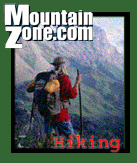
Thru-hiking Arizona's AZT
March 23, 2006

|
| Desert Light Photo Courtesy of Jasonray |
To go or not to go?
Great chances for solitude. Guaranteed sunshine. Bikeable. Summer heat. Little Water. Limited support. A thru-hike on Arizona's AZT means many challenges. Are you up for it?
The AZT
The Arizona Trail (AZT) is the fifth-longest trail in the Thru-Hiker's Guide to America, clocking in at just less than 800 miles in length. When fully completed, it will wind its way from the northern terminus at the Utah border all the way to the Coronado National Memorial, near the United States-Mexico border town Nogales. It will take you deep into desert territory, a landscape unfamiliar to most of us.
People sometimes imagine the Southwest as a barren land, mostly composed of sand, minor hills, and flat desert. Although the AZT travels through these types of terrain, this trail throws in major mountain ranges (with major climbing) more reminiscent of California's Sierra Nevada or Utah's Uinta Mountains.
The AZT has not been completely marked as of yet, and sections of unmarked terrain, especially south of Flagstaff, can be confusing. But this trail is thru-hikeable, if you examine maps carefully and don't mind some road walking. The trail is also “thru-bikeable;” check out Andrea Lankford's well-researched book TK for more information.
Grand Canyon National Park
While there are many memorable sites on the AZT, none can quite compare with Grand Canyon National Park. Covering nearly 2,000 square miles, with 277 miles of the Colorado River at the bottom, the canyon is as wide as 18 miles and as narrow as four miles, and is roughly one mile deep. The highpoint in the park is Lookout Tower, at 9,615 feet; the low point is the Colorado River, at around 2,400 feet. The Grand Canyon is estimated to be five million years old, with some rocks on the very bottom dating back two billion years. This national park is a jackpot for those seeking a variety of natural wonders. If you look hard enough and long enough, you could spot more than fifty species of reptiles, nearly ninety different mammals, hundreds of flowering plant varieties, and more than three hundred types of birds. This canyon certainly deserves its ranking as one of the natural wonders of the world.
During non-winter months in the Grand Canyon you will most likely need to secure a backcountry camping permit. For more information, surf the trip planning section of the National Park Service's website at www.nps.gov/grca/grandcanyon/index/htm. You can also call the park's backcountry office at 928-638-7875.
Weather
Well, there's no way around it: Arizona can get mighty hot. And the part about it being a dry heat? Actually, the lack of humidity is noticeable. A humid 80-degree day of hiking in New York's Catskills will seem much, much hotter if you are not properly prepared. Many savvy Arizona Trail hikers choose to take afternoon siestas. If you're on the AZT in the warm months, getting an early-morning start on this hot-weather trail will save you a lot of frustration and energy later in the day. Hiking at dusk might be a good idea, too.
On the other hand, it can get pretty cold on the AZT. On my north-to-south trip, the weather was quite cool and sometimes downright cold, because I traversed the trail in the middle of November. In fact, by the time I got to the North Rim of the Grand Canyon, there was an inch of snow on the ground and all facilities were closed. The solitude was great, but I froze!
The nighttime hours are tough, too. If you've been hiking or biking in sunny, 80-degree heat all day, when the sun finally sets and the thermometer drops to 50, you're going to feel pretty cold. No more solar radiation and a sudden 30-degree temperature drop? Brrr! In the minds of some well-traveled Southwesterners, there's nothing colder than the desert at night. Snow closes facilities and some roads on the North Rim of the Grand Canyon from November to April. Entering Arizona's higher elevations can mean encountering significant snow and ice, but generally, AZT sections south of the town of Payson are doable year-round.
IN THE NEWS |
|
| |
|
